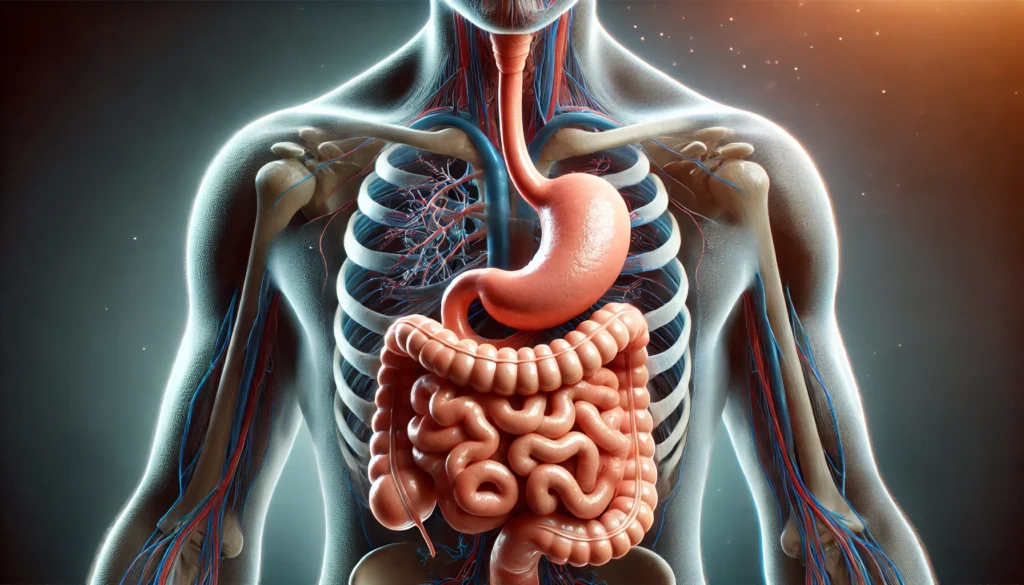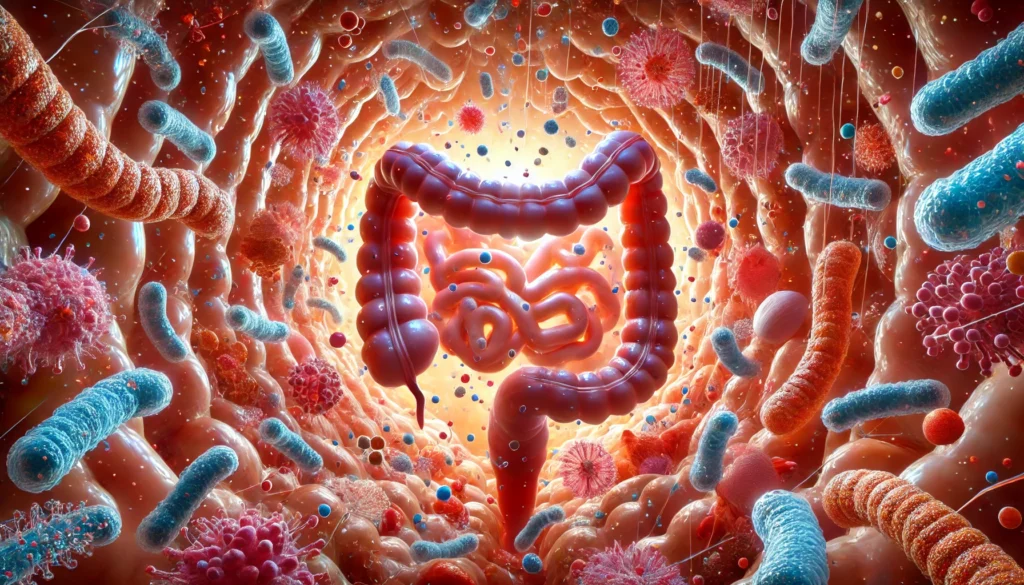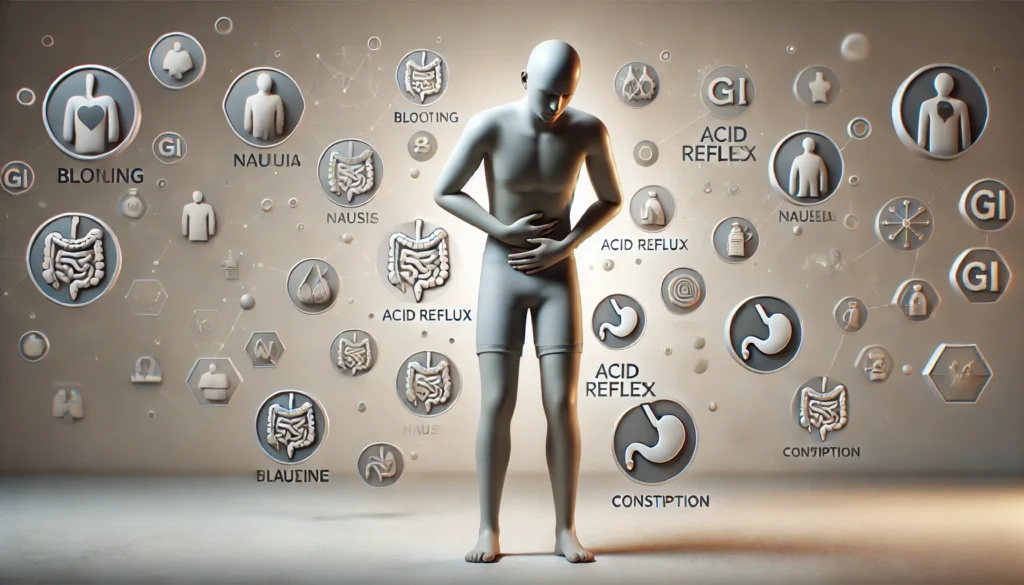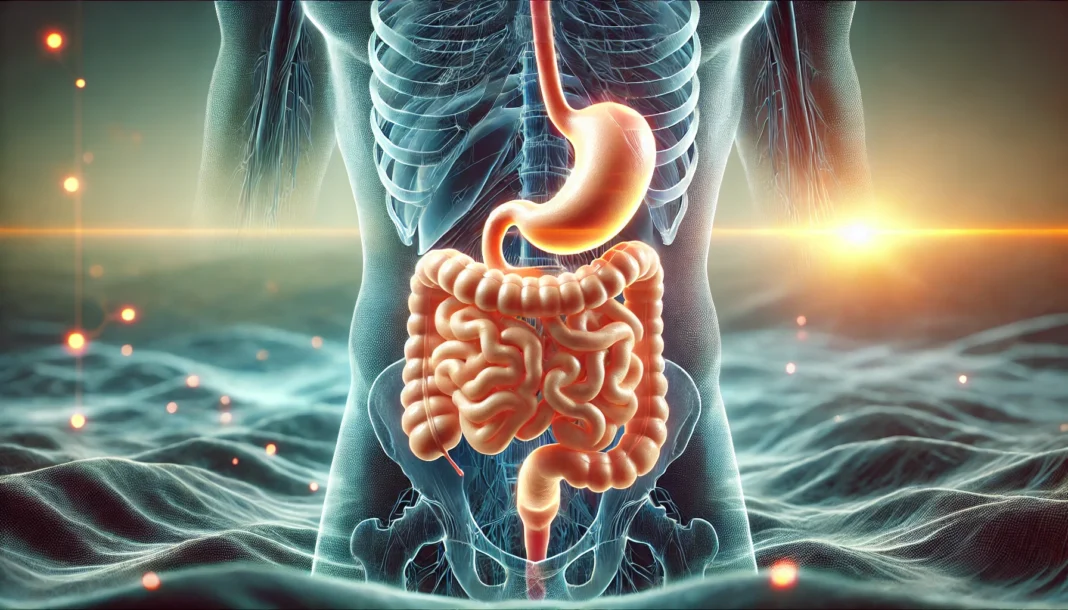Introduction
Digestive issues affect millions of people globally, often with symptoms so persistent and disruptive that they interfere with daily life, productivity, and emotional well-being. The complex and highly sensitive gastrointestinal system plays an integral role not only in processing food but also in immune function, nutrient absorption, mood regulation, and the inflammatory response. When this delicate system becomes unbalanced or inflamed, it can result in a variety of symptoms commonly referred to as gastrointestinal distress.
You may also like: The Science of Gut Repair: How to Heal Leaky Gut Syndrome Naturally with a Proven Gut Healing Diet
Gastrointestinal distress, or GI distress, is not a single condition but an umbrella term for a wide spectrum of digestive complaints. These include abdominal pain, bloating, nausea, gas, diarrhea, constipation, and more. It may be acute or chronic and can be caused by numerous underlying factors such as infections, diet, inflammation, medication side effects, or stress. Gastric distress, which is a subset of GI distress, refers specifically to disturbances that originate in the stomach, such as indigestion, acid reflux, or gastritis. While these terms are often used interchangeably, understanding their distinctions is essential for accurate diagnosis and treatment.
This comprehensive article aims to demystify GI distress by examining the various causes, symptoms, and science-backed treatment options available. We’ll explore the physiological underpinnings of gastrointestinal distress, the differences between upper and lower GI issues, the influence of the gut-brain axis, and the role of inflammation and microbiota disruption. From diagnostic strategies to integrative therapies, this in-depth guide is built upon EEAT (Experience, Expertise, Authoritativeness, Trustworthiness) principles to provide reliable, medically accurate insights. Whether you’re dealing with occasional gastric discomfort or long-term digestive challenges, this article will empower you with knowledge, clarity, and actionable solutions.

The Anatomy of the Digestive System: Understanding Where GI Distress Begins
To fully comprehend gastrointestinal distress, it’s important to first understand the architecture of the digestive system and the key organs involved. The gastrointestinal tract starts at the mouth and ends at the anus, encompassing the esophagus, stomach, small intestine, large intestine, rectum, and accessory organs such as the liver, pancreas, and gallbladder.
Gastric distress originates specifically in the stomach. Symptoms like indigestion, reflux, nausea, and gastric pain often point to dysfunction in this upper GI region. The stomach is responsible for breaking down food with gastric acids and enzymes. Any disruption in acid production, mucosal protection, or motility here can lead to gastric discomfort and inflammation.
Gastrointestinal distress, on the other hand, refers more broadly to dysfunction throughout the entire digestive tract. This includes not just the stomach, but also the intestines where absorption of nutrients and water occurs. Distress in these regions may manifest as bloating, irregular bowel movements, or cramping. The large intestine, in particular, is home to a massive population of microorganisms that make up the gut microbiota—a key player in both digestive and immune health.
When any part of this system is compromised, the resulting cascade of symptoms can range from mildly annoying to life-altering. This is why understanding the source and scope of your symptoms—whether it’s limited to gastric distress or part of a larger pattern of gastrointestinal distress—is vital for choosing the right intervention.

Common Causes of GI Distress and Gastric Distress
The causes of GI distress are multifactorial and can vary widely between individuals. While some people may experience symptoms due to dietary triggers, others may be dealing with infections, inflammation, or chronic disorders. Understanding the most common causes provides a solid foundation for both diagnosis and treatment.
One of the primary causes of gastrointestinal distress is dietary indiscretion. Consuming processed foods, excessive sugar, fried items, and artificial additives can irritate the gut lining and disrupt microbial balance. Food intolerances, such as lactose or gluten sensitivity, are also prevalent triggers. These intolerances can cause both gastric and intestinal symptoms, depending on where the food reaction occurs.
Infections are another major contributor. Bacterial pathogens like Helicobacter pylori, Salmonella, or E. coli can cause acute gastric distress, while viruses and parasites may affect intestinal function. These infections not only damage the mucosal lining but can also trigger immune responses that lead to prolonged inflammation and GI dysfunction.
Stress is a frequently underestimated cause of gastrointestinal issues. The gut-brain axis—the bidirectional communication pathway between the central nervous system and the enteric nervous system—means that psychological stress can directly impact digestion. Chronic stress can lead to delayed gastric emptying, increased intestinal permeability, and changes in microbiota composition, thereby exacerbating both gastric and GI distress.
Medication use, particularly NSAIDs, antibiotics, and certain antidepressants, can also disturb the digestive system. NSAIDs may erode the stomach lining, leading to gastric ulcers or gastritis, while antibiotics can cause dysbiosis by killing beneficial gut bacteria. The impact of medications on gut function is a growing area of concern and often overlooked in clinical assessments.
Inflammatory conditions like Crohn’s disease, ulcerative colitis, and celiac disease represent more severe, chronic causes of gastrointestinal distress. These conditions involve immune-mediated damage to the gut lining and require more aggressive treatment strategies, including immunosuppressants, specialized diets, and ongoing medical supervision.

Symptoms: How GI Distress Manifests
Gastrointestinal distress can present with a wide variety of symptoms, depending on the underlying cause, location, and duration of the problem. Recognizing symptom patterns can help in determining whether the distress is acute or chronic, gastric or intestinal, functional or pathological.
In cases of gastric distress, symptoms often include upper abdominal pain or burning, nausea, early satiety, and bloating shortly after meals. Acid reflux and indigestion are hallmark signs of stomach-related issues and may indicate conditions such as gastritis, peptic ulcers, or gastroesophageal reflux disease (GERD).
Gastrointestinal distress involving the intestines often includes lower abdominal cramping, irregular bowel movements (diarrhea or constipation), bloating, excessive gas, and a feeling of incomplete evacuation. These symptoms may be intermittent or continuous and can fluctuate with dietary intake, stress levels, or hormonal cycles.
Systemic symptoms are also common in chronic GI distress. These include fatigue, brain fog, headaches, skin problems, and even joint pain, which are often signs of systemic inflammation originating in the gut. This supports the growing recognition of the gut as not just a digestive organ, but a central hub of overall health.
Identifying the nature, frequency, and triggers of these symptoms is crucial for making a differential diagnosis. Keeping a detailed symptom diary and tracking changes related to diet, stress, medications, and menstrual cycles can offer invaluable clues for both patients and clinicians.

The Role of the Gut Microbiota in Digestive Health
The gut microbiota—the trillions of bacteria, fungi, and viruses that reside in the digestive tract—play a central role in maintaining gastrointestinal health. These microorganisms aid in the digestion of complex carbohydrates, synthesize vitamins, regulate immune responses, and protect against pathogens. When the balance of this microbial ecosystem is disrupted, a condition known as dysbiosis, it can lead to widespread GI distress.
Emerging research links dysbiosis to numerous digestive conditions, including irritable bowel syndrome (IBS), inflammatory bowel disease (IBD), and small intestinal bacterial overgrowth (SIBO). In dysbiotic states, harmful bacteria may proliferate, producing gases and toxins that damage the gut lining and provoke immune responses. This can manifest as bloating, irregular stools, and abdominal discomfort.
Certain lifestyle factors are known to influence microbiota composition. Antibiotic overuse, lack of dietary fiber, chronic stress, and poor sleep hygiene all contribute to microbial imbalance. On the other hand, diets rich in prebiotic fibers (found in vegetables, fruits, and whole grains) and fermented foods can help promote the growth of beneficial species.
Restoring microbial balance is a key therapeutic target in the treatment of gastrointestinal distress. This can be achieved through diet, probiotics, prebiotics, and in some severe cases, fecal microbiota transplantation (FMT). Personalized microbiome testing is also becoming more accessible and may offer targeted insights for intervention in the near future.
Frequently Asked Questions
1. What is the difference between GI distress and gastric distress?
GI distress encompasses discomfort or dysfunction throughout the entire gastrointestinal tract, including the stomach, intestines, and colon. Gastric distress specifically refers to symptoms originating in the stomach. While gastric distress often involves nausea, indigestion, or acid reflux, GI distress may include lower abdominal pain, bloating, or changes in bowel movements. Understanding these distinctions is essential for proper diagnosis and targeted treatment.
2. Can gastrointestinal distress be caused by stress alone?
Yes, stress is a powerful trigger of gastrointestinal distress. Through the gut-brain axis, psychological stress can alter motility, disrupt enzyme secretion, and increase gut permeability. These changes often lead to symptoms such as bloating, cramping, and irregular stools. Chronic stress can also lead to dysbiosis, further exacerbating GI symptoms. Addressing stress through therapy, mindfulness, and lifestyle interventions can be a crucial component of digestive health.
3. What tests are used to diagnose GI distress?
Physicians may use a variety of diagnostic tools to identify the root cause of gastrointestinal distress. Common tests include blood panels, stool analysis, breath tests for SIBO, food sensitivity testing, and endoscopic evaluations. Imaging techniques such as abdominal ultrasound, CT scans, or MRI may also be used. In complex cases, motility studies or capsule endoscopy may provide deeper insights into functional abnormalities.
4. Are food intolerances responsible for GI symptoms?
Food intolerances are a common cause of gastrointestinal distress. Unlike food allergies, which trigger an immune response, intolerances lead to digestive symptoms such as bloating, gas, and cramping due to poor digestion or absorption. Lactose, gluten, fructose, and histamine are frequent culprits. Identifying and eliminating these foods through structured elimination diets can dramatically reduce GI symptoms and improve overall gut function.
5. What role do probiotics play in treating GI distress?
Probiotics can help restore microbial balance in the gut, particularly in cases of dysbiosis or after antibiotic use. They are often used to manage symptoms of IBS, SIBO, and post-infectious GI syndromes. Different strains offer different benefits, so selection should be based on the specific condition being treated. Probiotics may reduce inflammation, improve motility, and enhance barrier function, but they should be used under guidance for optimal results.
6. How can dietary changes help manage GI symptoms?
Dietary intervention is one of the most effective tools for managing gastrointestinal distress. Eliminating trigger foods, increasing anti-inflammatory nutrients, and optimizing fiber intake can significantly reduce symptoms. Plans like the low-FODMAP diet have been shown to improve outcomes in IBS, while high-fiber and plant-based diets support microbial health. Hydration and regular meal timing also play critical roles in gut function.
7. Is chronic gastric distress a sign of a more serious problem?
In some cases, yes. Chronic gastric distress may be a sign of peptic ulcers, gastritis, H. pylori infection, or even gastric cancer. If symptoms like persistent pain, vomiting, weight loss, or blood in stools occur, immediate medical attention is necessary. Endoscopy is often used to evaluate the stomach lining and detect abnormalities. Early diagnosis is key to preventing complications.
8. Can children experience gastrointestinal distress?
Absolutely. Children are susceptible to many of the same GI issues as adults, including food intolerances, infections, and stress-related conditions. Symptoms may include abdominal pain, diarrhea, or constipation. In younger children, behavioral signs like irritability or refusal to eat may signal underlying GI distress. Pediatric evaluation, including appropriate testing and dietary assessment, is important for accurate diagnosis and treatment.
9. How does inflammation contribute to GI disorders?
Inflammation is both a cause and consequence of gastrointestinal distress. It may result from infection, food sensitivities, autoimmune reactions, or microbiome imbalances. Chronic inflammation damages the intestinal lining, increases permeability, and alters immune signaling, creating a cycle of persistent symptoms. Managing inflammation through diet, targeted supplements, and medications is essential for long-term relief.
10. What lifestyle changes help prevent GI distress?
Preventative strategies include stress management, regular physical activity, adequate sleep, and a nutrient-rich diet. Reducing alcohol intake, quitting smoking, and limiting NSAID use also support digestive health. Maintaining a healthy weight and staying hydrated are equally important. For individuals with known sensitivities or chronic conditions, routine follow-ups with healthcare providers help monitor symptoms and prevent flare-ups.

Conclusion
Gastrointestinal distress is a complex and multifaceted condition that can impact every aspect of a person’s health and quality of life. Whether it presents as mild gastric distress or full-blown GI dysfunction, its causes are often deeply intertwined with lifestyle, diet, microbiota, stress, and systemic inflammation. Properly identifying the type, source, and severity of symptoms is critical for choosing effective treatment strategies.
Scientific advancements in gut health have provided powerful tools—from sophisticated diagnostic tests to evidence-based integrative therapies. A truly holistic approach considers both physiological mechanisms and psychosocial factors, creating a comprehensive plan that restores digestive balance. Whether through probiotics, personalized nutrition, microbiome rebalancing, or medication when necessary, relief from GI distress is not only possible—it’s achievable.
As we continue to learn more about the gut’s central role in immunity, mental clarity, and metabolic health, managing gastrointestinal distress becomes not just a clinical necessity but a cornerstone of lifelong well-being. Empowered with accurate knowledge and expert-backed solutions, readers can confidently take the next steps toward healing, resilience, and optimal digestive function.
Was this article helpful? Don’t let it stop with you. Share it right now with someone who needs to see it—whether it’s a friend, a colleague, or your whole network. And if staying ahead on this topic matters to you, subscribe to this publication for the most up-to-date information. You’ll get the latest insights delivered straight to you—no searching, no missing out.



